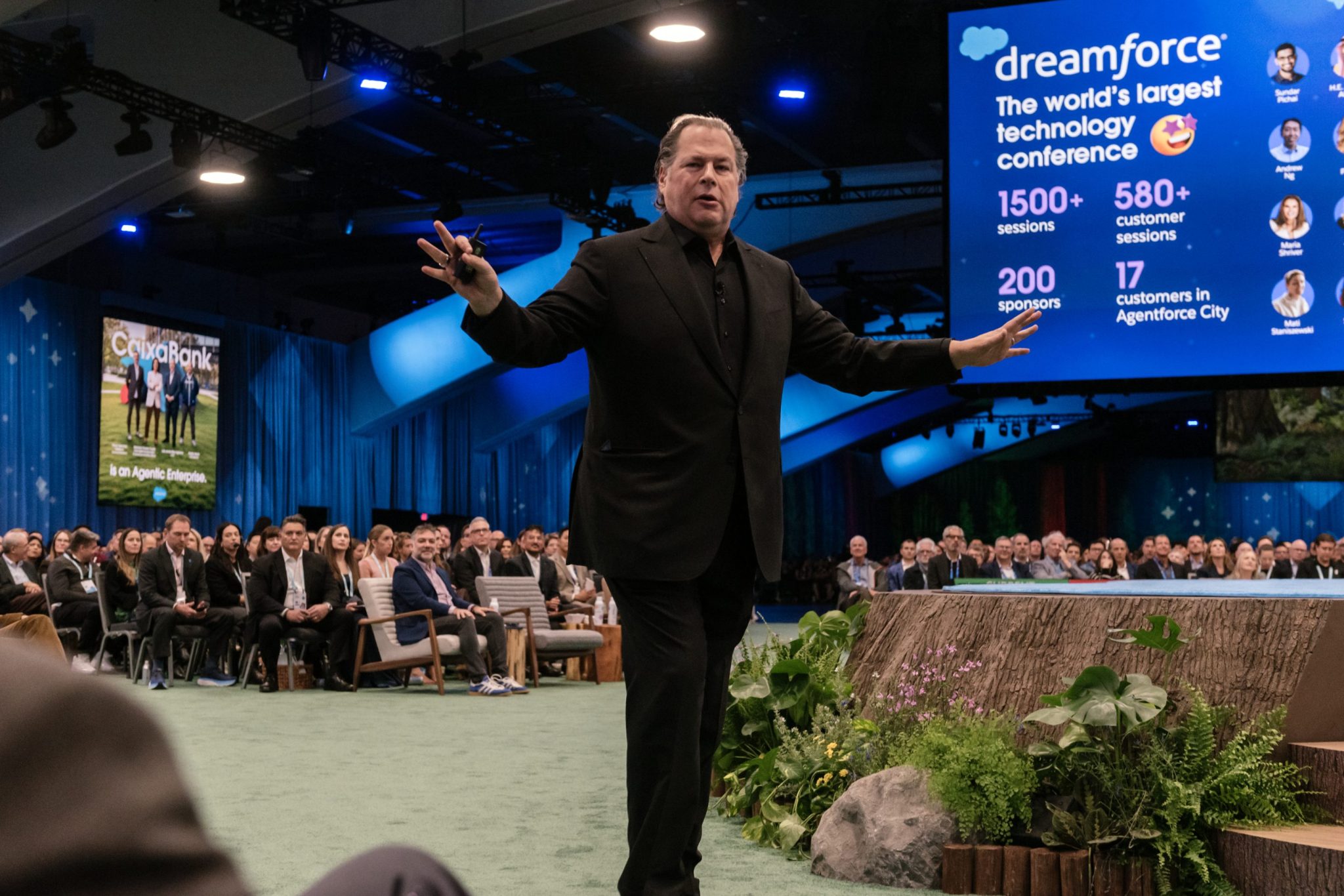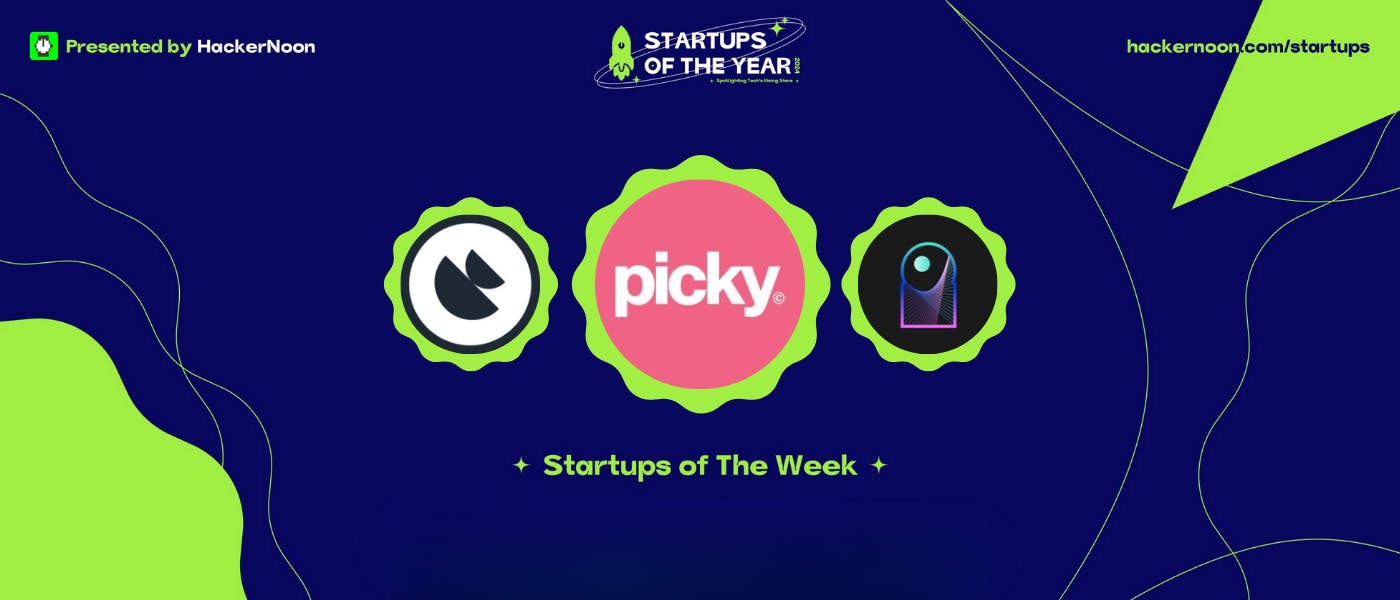When the media missed the message: Benioff clarifies meaning on multiple levels


Communications scholar Marshall McLuhan’s prescient 1964 bestseller, Understanding Media, argued that “the media is the message,” in which the technology overtakes the spoken words it transmits. In fact, the core messages can get garbled if the media can’t keep up with the intended meaning. Ironically, the media echo chamber initially misunderstood key messages from Salesforce founder Marc Benioff about the safety context of the San Francisco-based Dreamforce extravaganza, as well as the nature of the technology it was showcasing.
To many people, the firestorm that quickly engulfed Benioff after a buzzy New York Times interview this month seems deserved—just another Big Tech CEO pusillanimously rebranding their politics to gain the favor of President Trump and seeming to endorse a declaration of martial law. A Bloomberg columnist went even further, calling the comments “more than the general bootlicking.” An AdWeek contributor declared, “Dance with politics and you often lose half the market. Sometimes all of it.”
But those presumptions are lazy attempts to understand how a prominent figure in the Bay Area community takes responsibility for leading his company. What was a legitimate safety concern became a political drama. Such shortsightedness is not only plain wrong but also another example of how every word is weaponized in the American society of 2025.
Benioff shows how leaders shape context and meaning
Benioff is a seasoned leader, familiar with navigating through this sort of myopic thinking. Many CEOs could have been overwhelmed by the daunting challenge of simultaneously mastering media misconceptions on multiple fronts. But instead of tripping in frustration, Benioff rose to the threefold leadership challenge of correcting a media misunderstanding, pulling off another tentpole event for his company, and contributing a major economic boost to his beloved San Francisco.
A devoted booster of San Francisco, Benioff has long been an advocate for public safety and a sponsor of increasing police protection and staffing levels. And his controversial interview was ambiguous on its face, and appears to have been parsed in a manner meant to capture headlines instead of providing the intricate truths. The key quote was about the National Guard: “We don’t have enough cops, so if they [the National Guard] can be cops, I’m all for it,” he said. This has to be understood in the context of the Trump administration sending the National Guard into several cities across the country on the pretext of an out-of-control crime wave—one that’s contradicted by most statistics. Benioff advocating for the National Guard to invade San Francisco was construed to seem as a long-time liberal, benevolent billionaire making a heel turn into the Trump camp, a move that so many Silicon Valley oligarchs have made.
And yet. The very same New York Times journalist who interviewed Benioff has also reported on perceived safety concerns in San Francisco herself over the past nine months. She has covered newly elected Mayor Dan Lurie’s efforts to roll back highly questionable open-drug-use policies, such as “the free distribution of clean foil, pipes, and plastic straws on the streets of San Francisco.” In another article, the same reporter quoted Lurie saying, “widespread drug dealing, public drug use, and constantly seeing people in crisis has robbed us of our sense of decency and security.”
Benioff clarified his National Guard comments in subsequent days leading up to Dreamforce, without backing off his long-running concerns over public safety. “I do not believe the National Guard is needed to address safety in San Francisco,” he posted on X. “I sincerely apologize for the concern it caused … It’s my firm belief that our city makes the most progress when we all work together in a spirit of partnership.” In fact, President Trump then backed off his threats to send the National Guard after speaking with Benioff, Nvidia CEO Jensen Huang, and Mayor Lurie.
At Dreamforce the next day, he told CNBC’s Jim Cramer that he “just want[ed] the city to be as safe as possible” ahead of the conference. Benioff has numerous reasons to personally ensure the event succeeds, both as a CEO and as a community philanthropist. Unfortunately, like many major cities, San Francisco has a shortage of police officers—500 officers, according to the San Francisco Police Department, or an understaffing of more than 20%.
Each year, Dreamforce brings nearly 50,000 people to downtown San Francisco for three days of major keynotes, customer-led discussions, product demos, hands-on learning, and community building. Millions of viewers watch online. Attendees this year included the biggest names in business, such as Dell Technologies’ Michael Dell, Starbucks’ Brian Niccol, and FedEx’s Richard Smith, as well as everyday users of Salesforce products. The economic impact on San Francisco is estimated to generate $130 million in revenue for the city and create 35,000 local jobs.
And then there’s Salesforce’s importance for the wider tech sector, especially in the artificial intelligence (AI) space. Its nascent systems are unlike traditional AI models, which operate within predefined constraints and require human intervention. Salesforce’s agentic AI provides autonomy capable of making its own decisions, planning, executing complex multi-step workflows, and adapting to changing circumstances without being driven by the constant human intervention of generative AI models such as OpenAI, Anthropic, Perplexity, Gemini, and Grok.
The market has not been impressed. Salesforce’s stock is down nearly 25% year-to-date, while competitors such as Microsoft (up 25%), Oracle (up 70%), and SAP (up 10%) have seen solid gains. Markets have continued to focus on quarterly results rather than the extraordinary potential in Salesforce’s burgeoning agentic AI capabilities.
Like the partisan preconceptions surrounding Benioff and his New York Times interview, the faulty assumptions about Salesforce’s future performance are missing the bigger picture. Or as CNBC’s Cramer said, you cannot miss “the forest for the trees” when it comes to Benioff’s long-term vision. The market gave a hint of agreement, as Dreamforce was hailed as a massive success. The market even offered a rare reprieve, sending Salesforce’s stock up by almost 5%.
The leap into agentic AI
Agentic AI “isn’t vaporware or beta testing,” Benioff explained to Cramer at Dreamforce. The Salesforce CEO used the annual event to deliver an impressive showcase of the revolutionary technology in real-world applications by some of the world’s largest companies.
FedEx has realized “hundreds of millions of dollars” in new revenue by converting customers to use international services in addition to domestic. These AI-powered insights have allowed the shipping giant to capture market share from competitors.
Williams-Sonoma expects over 60% of chat inquiries to be resolved autonomously through applications such as “Olive,” an automated sous-chef agent that provides personalized menu planning, shopping lists, and product recommendations.
More than 12,000 other customers, including OpenTable, Reddit, and Under Armour, have already adopted Salesforce’s agentic AI technology, Agentforce, for use as sales agents, supply chain management, and IT service management, among others. The tens of thousands of deployments led to a 119% surge in agent creation during the first half of the year and have resulted in the Data and AI business segment reaching $1.2 billion in the most recent quarter, a year-over-year growth rate of 120%.
The visionary who bet early
Given all the hype around agentic AI, why has Salesforce seen lackluster performance over the last five years? The answer is simple: Marc Benioff has been thinking long-term, transforming Salesforce for the age of AI. It began as early as 2014, in an all-hands meeting, when Benioff boldly told employees and shareholders that “Salesforce will become an AI-first company.” And the vision became reality as early as 2016, with the introduction and integration of Einstein into the Customer Resource Management (CRM) platform, enabling more predictive and personalized customer experiences.
Strategic acquisitions—from Tableau to Slack to MetaMind to Airkit—and major R&D initiatives have each contributed to Salesforce’s unique first-mover advantage in agentic AI. The company has invested more than $10 billion in R&D in the technology since fiscal year 2024, shipping four iterations of Agentforce. Salesforce is not just adding basic AI features, like another duplicative LLM. Instead, Benioff is advancing his fundamental transformation of how the business operates into an “era of Agentic Enterprise.”
The founder and chief executive is so confident in the potential of Agentforce and Salesforce’s other AI technologies that he announced a new long-term revenue target of over $60 billion by fiscal year 2030, suggesting a 10% organic compounded annual growth rate for the next five years. Even Michael Dell appears to buy into the potential as well, telling Dreamforce attendees that Agentforce would “reinvent his whole company.”
Unfortunately, short-term-oriented financial markets do not always reward the interim progress of visionaries. Perhaps with the successes presented at Dreamforce 2025, investors will begin to understand where Benioff is taking Salesforce. While the tech world debated whether agentic AI was hype, Benioff was already building it, deploying it, proving it, and restructuring his entire $40 billion company around it. This is the mark of a visionary—not waiting for consensus, but creating the future while others pontificate about it.
History will not remember the distortion of a CEO’s vague phrasing about event security in October 2025; it will, however, remember the visionary who declared “AI-first” and delivered the enterprise AI revolution that is now transforming how the world’s top companies operate. True leadership is not about flawless words but about conveying electrifying meaning. This requires nimble responses, perfect timing, and unwavering execution.
Recent neurological research by the University of Rochester on multitasking reveals that versatile brains can complete complex cognitive tasks simultaneously. Still, many do not know how Benioff skillfully juggled concurrent leadership tasks, doing more than the “one thing at a time,” a display of unidimensional focus so often preached by coaches. Leaders must not only walk and chew gum at the same time, but multitasking becomes especially critical when they accidentally step on the gum.
The opinions expressed in Fortune.com commentary pieces are solely the views of their authors and do not necessarily reflect the opinions and beliefs of Fortune.





